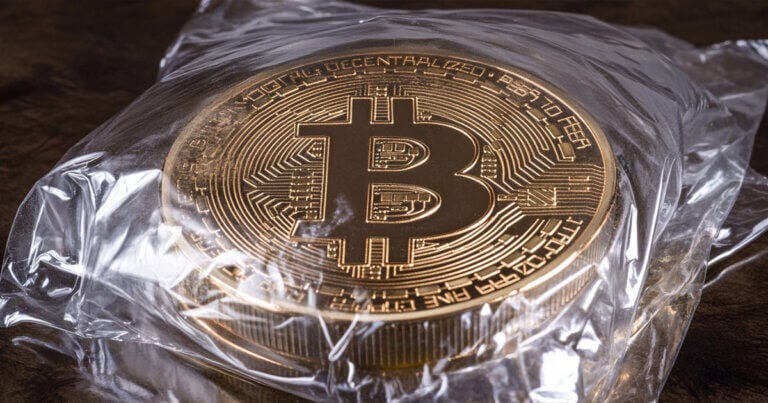Bitcoin, the pioneer of cryptocurrencies, is renowned for its security and store-of-value properties, but it wasn’t built for the dynamic world of decentralized finance (DeFi). Enter wrapped Bitcoin, a clever innovation that brings Bitcoin’s value into smart contract ecosystems like Ethereum, enabling BTC holders to participate in DeFi without selling their assets. This article explores what wrapped Bitcoin is, how it works, its benefits, risks, and why it matters for the future of crypto.
What Is Wrapped Bitcoin and Why Does It Exist?
Bitcoin operates on its own blockchain, designed for secure, peer-to-peer transactions but lacking the flexibility for complex applications like decentralized exchanges, lending protocols, or NFT marketplaces. These activities thrive on smart contract platforms like Ethereum, Binance Smart Chain (BNB Chain), and others. Wrapped Bitcoin bridges this gap by “wrapping” Bitcoin into a token format compatible with these blockchains, allowing BTC holders to tap into DeFi’s opportunities while retaining exposure to Bitcoin’s value.
The most prominent version, Wrapped Bitcoin (WBTC), is an ERC-20 token on Ethereum, where each WBTC is backed 1:1 by actual Bitcoin held in custody. This means one WBTC represents one BTC, ensuring its value tracks Bitcoin’s price. Other variants, like tBTC (Threshold Bitcoin), BBTC (Binance’s version on BNB Chain), and CBTC (Coinbase’s version on Base Chain), serve similar purposes but differ in their approach to custody and decentralization.
The primary motivation for wrapped Bitcoin is to unlock Bitcoin’s massive liquidity, over $2 trillion at current prices, for use in DeFi. By enabling Bitcoin to interact with smart contracts, users can trade on decentralized exchanges, earn yield through lending, or purchase NFTs, all while holding a Bitcoin-backed asset. This flexibility is a game-changer for BTC holders who want to engage in DeFi without converting to other cryptocurrencies.
How Wrapped Bitcoin Works
The process of creating wrapped Bitcoin is straightforward but relies on specific mechanisms to maintain its peg to Bitcoin. Here’s how it typically works with WBTC, the most widely used version:
Locking Bitcoin: A user sends BTC to a custodian, often through a merchant like BitGo, a trusted digital asset custody provider. The custodian securely locks the BTC in a designated wallet.
Issuing WBTC: For each BTC locked, the custodian mints an equivalent amount of WBTC on Ethereum. This “wrapping” process ensures a 1:1 peg, verified through transparent on-chain records.
Using WBTC: The user receives WBTC, which can be traded, lent, or used in Ethereum-based DeFi applications like Uniswap, Aave, or OpenSea, just like any ERC-20 token.
Unwrapping: To redeem their Bitcoin, the user sends WBTC back to the custodian, who burns the tokens and releases the equivalent BTC, a process called “unwrapping”.
Other versions, like tBTC, take a decentralized approach. Instead of a single custodian, tBTC uses a network of signers to secure the locked Bitcoin, reducing reliance on centralized entities. BBTC and CBTC, issued by Binance and Coinbase respectively, operate similarly to WBTC but on their native blockchains, offering different trade-offs in terms of liquidity and ecosystem integration.
Benefits of Wrapped Bitcoin
Wrapped Bitcoin opens up a world of possibilities for Bitcoin holders:
Access to DeFi: Users can earn yield (sometimes over 20%, as seen with tBTC on Bitcoin.com’s decentralized exchange), trade on DEXs, or participate in liquidity pools without selling BTC.
Liquidity and Flexibility: Wrapped Bitcoin taps into Bitcoin’s vast market cap, making it one of the most liquid assets in DeFi. WBTC, for example, is widely supported across major DeFi platforms.
Ecosystem Integration: By conforming to standards like ERC-20, wrapped Bitcoin seamlessly integrates with smart contract platforms, expanding Bitcoin’s utility beyond its native blockchain.
Risks and Trade-Offs
Despite its advantages, wrapped Bitcoin introduces risks not present in native Bitcoin:
Custodial Risk: For WBTC, users must trust custodians like BitGo to securely hold their BTC and honor redemption requests. A hack or mismanagement could result in losses, undermining Bitcoin’s trustless ethos.
Centralization Concerns: Unlike Bitcoin’s decentralized network, WBTC relies on centralized custodians, creating a single point of failure. tBTC mitigates this with its decentralized signer network, but it has lower liquidity and adoption.
Smart Contract Vulnerabilities: Wrapped Bitcoin operates on smart contract platforms, which can be exploited if coding flaws exist. Ethereum’s history includes high-profile hacks, though robust auditing reduces this risk.
Platform-Specific Risks: Variants like BBTC and CBTC tie users to Binance or Coinbase ecosystems, which may have unique governance or operational risks.
Why Wrapped Bitcoin Matters
Wrapped Bitcoin represents a crucial bridge between Bitcoin’s robust security and the innovative world of DeFi. It allows Bitcoin, often viewed as “digital gold”, to serve as a functional asset in fast-evolving financial ecosystems. By enabling BTC holders to earn yield or engage in complex financial strategies, wrapped Bitcoin enhances Bitcoin’s relevance in a multi-chain world.
Moreover, the rise of decentralized alternatives like tBTC highlights the crypto community’s push for trustless solutions, aligning with Bitcoin’s core principles. While WBTC dominates due to its liquidity and widespread adoption, tBTC’s decentralized model could gain traction as users prioritize security over convenience.
The success of wrapped Bitcoin also underscores the broader trend of blockchain interoperability. As DeFi grows, bridging assets across chains will be critical to unlocking the full potential of cryptocurrencies. Wrapped Bitcoin is a pioneering example, paving the way for other cross-chain solutions.
Conclusion
Wrapped Bitcoin is not a new coin but a powerful extension of Bitcoin’s utility, bringing its value into the vibrant DeFi ecosystem. Whether through WBTC’s custodial model or tBTC’s decentralized approach, it offers BTC holders unprecedented flexibility to engage with smart contract platforms. However, the trade-offs, particularly custodial and smart contract risks, require careful consideration.
For those eager to explore DeFi while holding Bitcoin, wrapped Bitcoin is a compelling option. To dive in, platforms like Bitcoin.com’s wallet and decentralized exchange provide a gateway to staking, trading, and earning yield with assets like tBTC. As the crypto landscape evolves, wrapped Bitcoin will likely remain a cornerstone of innovation, connecting Bitcoin’s legacy to the future of finance.


